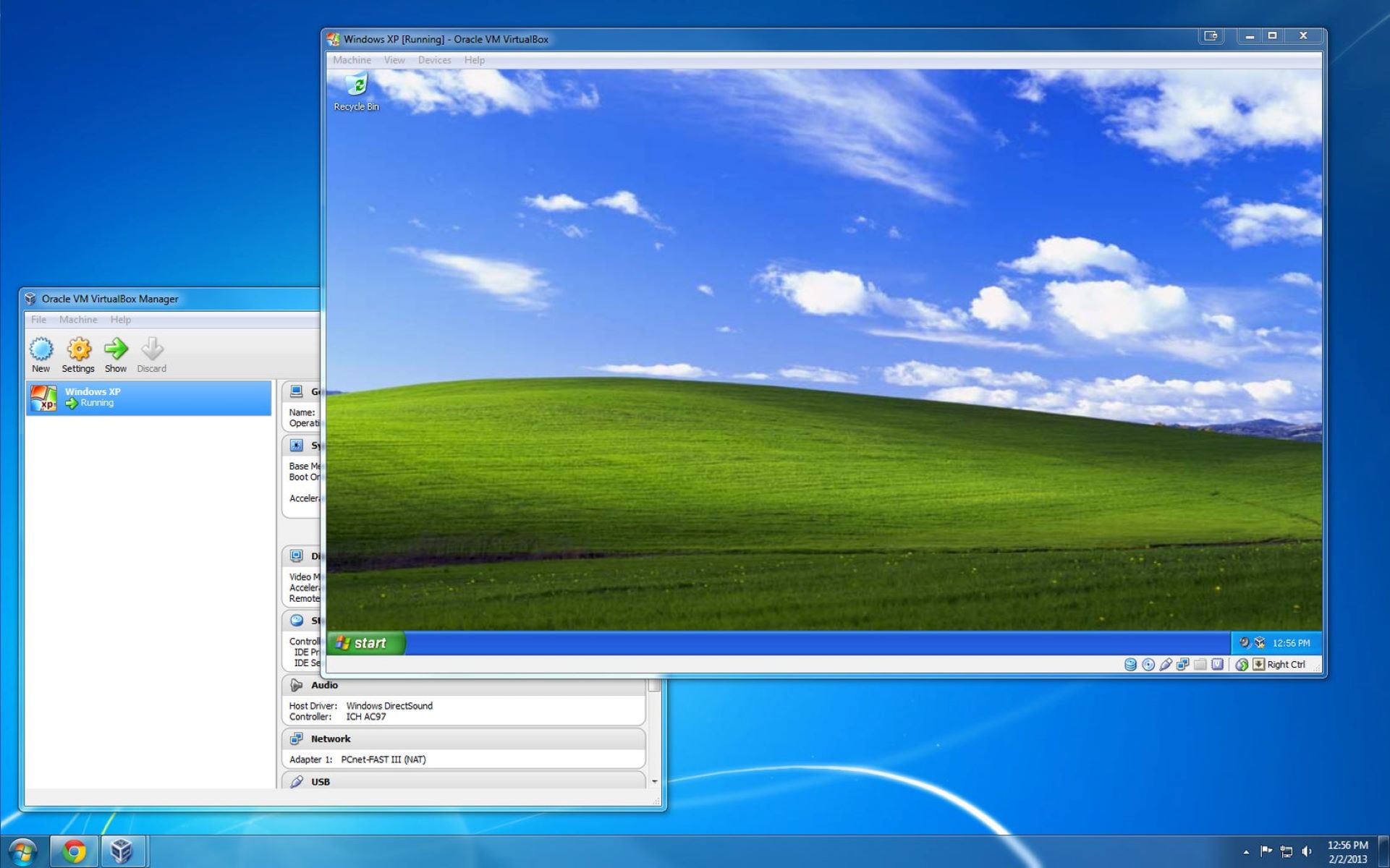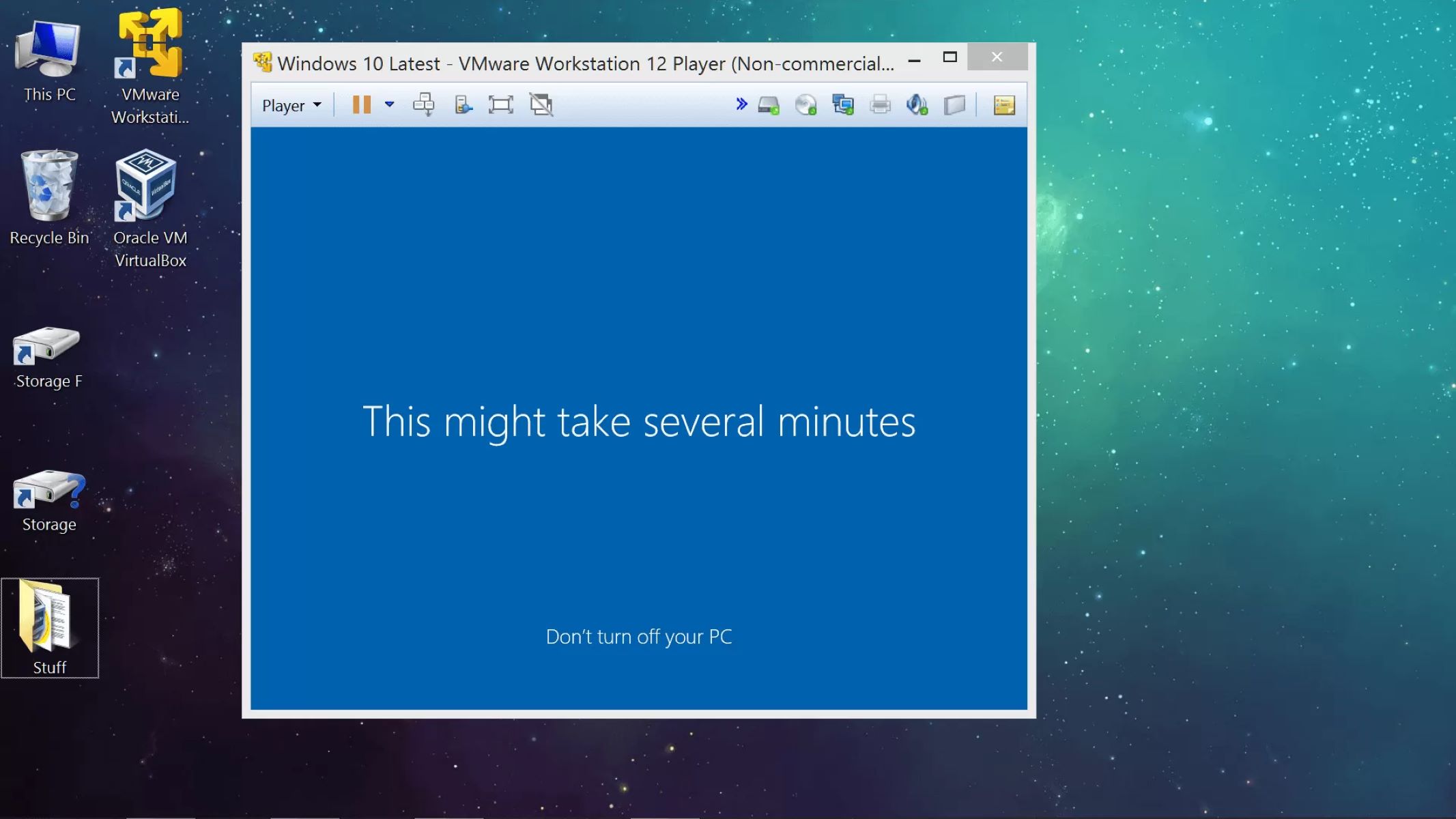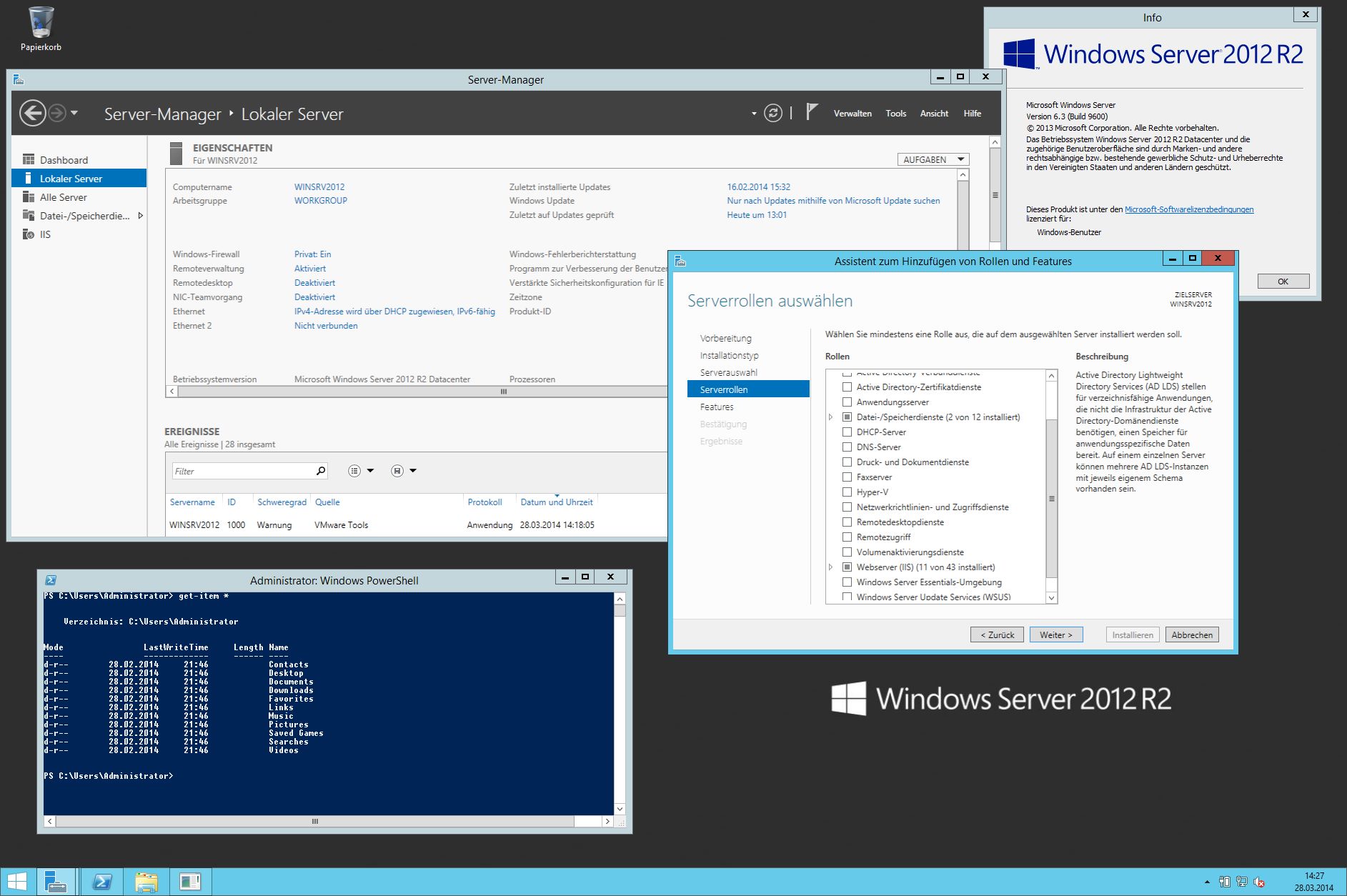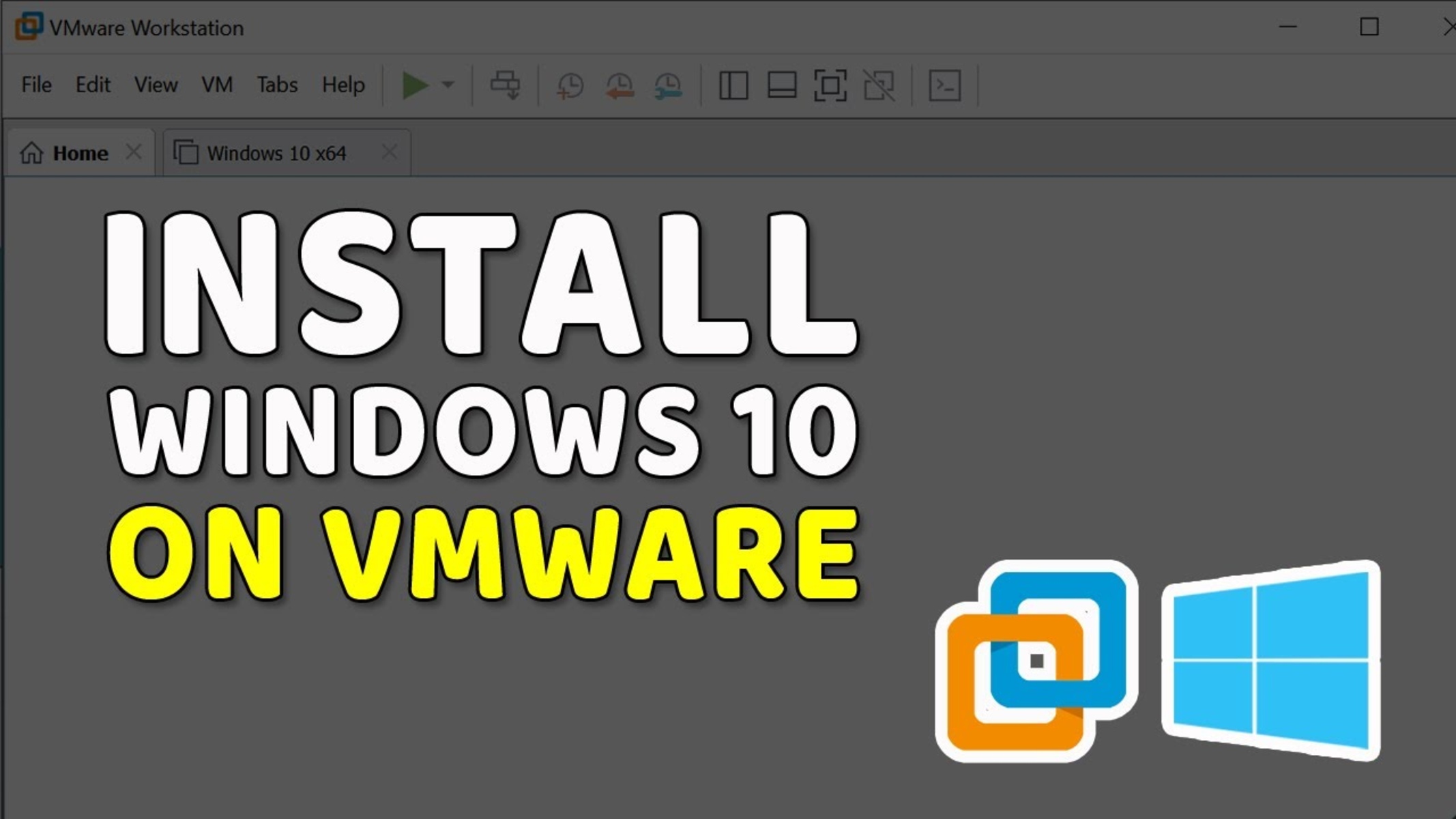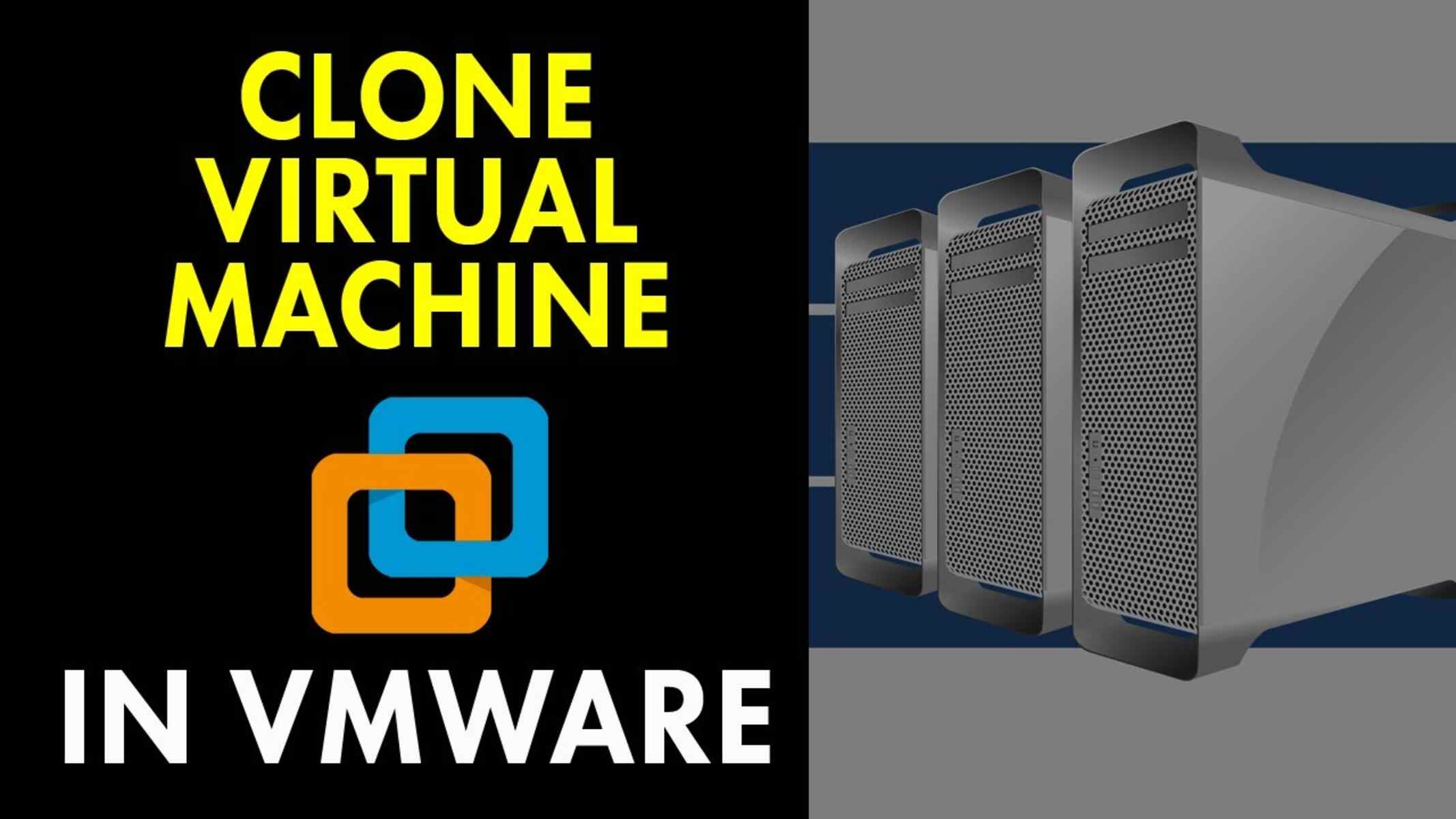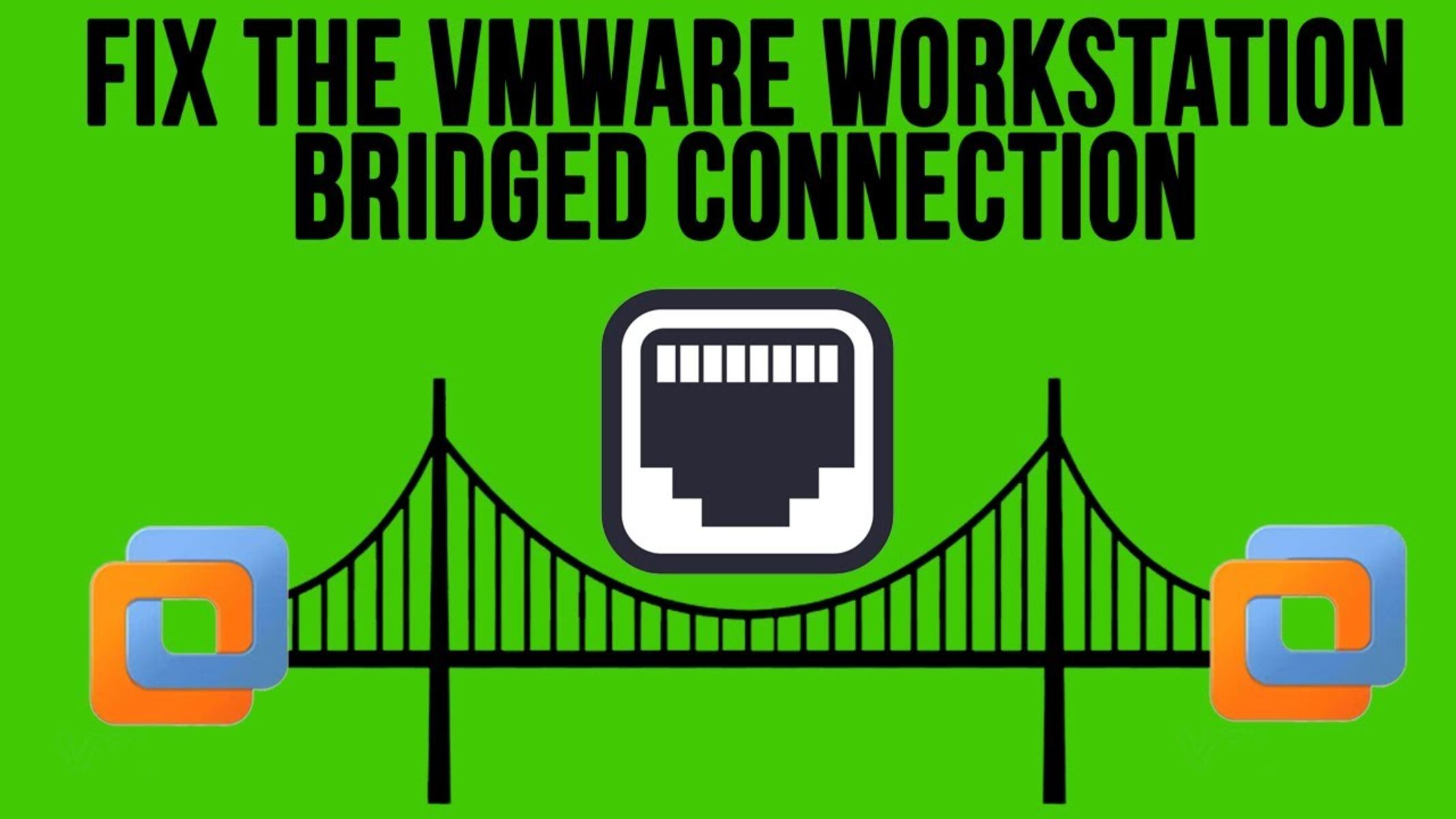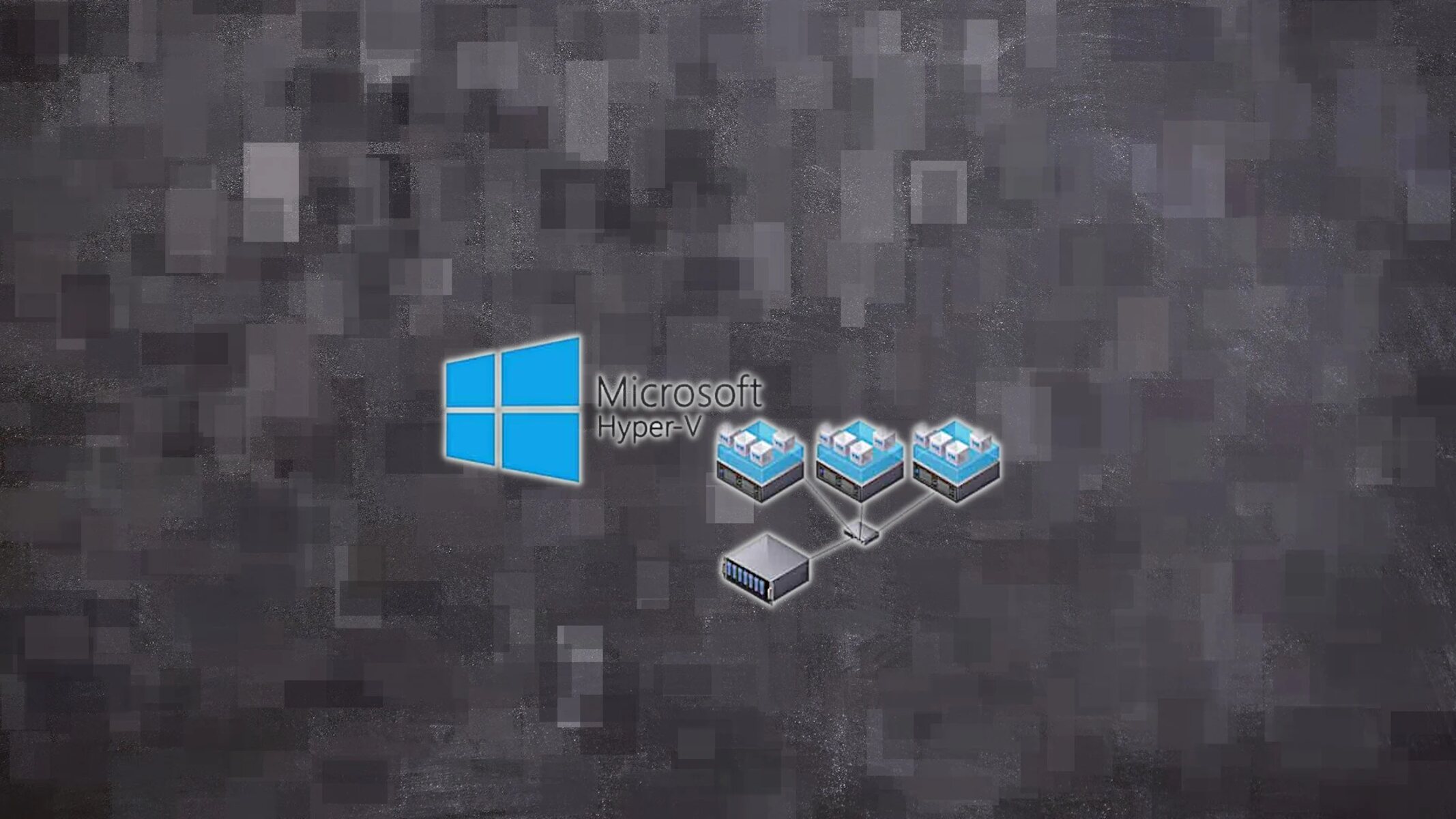Introduction
Virtual machines have revolutionized the way we use computers by allowing us to run multiple operating systems simultaneously on a single physical machine. Whether you’re an IT professional or just someone looking to experiment with different operating systems, setting up a virtual machine can open up a world of possibilities.
But what exactly is a virtual machine? In simple terms, it’s a software emulation of a physical computer that runs on your existing hardware. It allows you to create isolated environments where you can install and run multiple operating systems, applications, and software without affecting your main computer.
The benefits of using virtual machines are numerous. Firstly, they provide a safe and secure way to test new software or experiment with different operating systems without the risk of damaging your main computer. Virtual machines also offer the flexibility to easily allocate and manage system resources, such as memory and processor usage, to optimize performance for different tasks. This can be particularly useful for developers or IT professionals who need to replicate complex server environments for testing or deployment purposes.
Choosing the right virtualization software is crucial to the success of your virtual machine setup. There are various options available, both free and paid, each with its own set of features and compatibility. Popular choices include VirtualBox, VMware Workstation, and Microsoft Hyper-V. It’s important to consider factors such as ease of use, performance, and support for the operating systems you plan to use.
Once you’ve chosen the virtualization software, the next step is to install it on your computer. This typically involves downloading the installation package from the provider’s website and following the on-screen instructions. The installation process may vary slightly depending on the software you’re using, but it’s generally straightforward and doesn’t require technical expertise.
After the installation, you can start setting up a new virtual machine. This involves creating a virtual machine instance, selecting the desired operating system, specifying resource allocation, and configuring additional settings like networking and storage options. Once the virtual machine is set up, you can install the guest operating system of your choice, just like you would on a physical computer.
Overall, setting up a virtual machine offers a convenient and efficient way to maximize the potential of your existing hardware. Whether you’re a developer, a student, or simply curious about different operating systems, virtual machines provide a flexible and risk-free environment to explore and experiment. In the following sections, we will guide you through the step-by-step process of setting up and managing a virtual machine, including tips for optimization and troubleshooting common issues.
What is a Virtual Machine?
A virtual machine (VM) is a software implementation of a computer system that behaves like a physical machine. It allows you to run multiple operating systems on a single physical machine, enabling you to use different software and applications without the need for separate physical computers.
A virtual machine works by emulating the hardware and software components of a physical computer. It creates a self-contained and isolated environment that is separate from the host machine’s operating system. This isolation ensures that any changes made within the virtual machine do not impact the host system.
Each virtual machine is equipped with its own virtual hardware, including a processor, memory, storage, and network adapters. These virtual hardware resources are allocated from the physical hardware of the host machine. In essence, a virtual machine behaves as if it were a standalone computer with its own operating system and applications.
Virtual machines offer several advantages. They allow you to consolidate multiple operating systems onto a single physical machine, reducing the need for additional hardware. This can save costs, space, and energy consumption. Additionally, virtual machines enable you to create and manage different software environments, such as development or testing environments, without interfering with your main operating system.
One of the key benefits of using virtual machines is the ability to run different operating systems on the same physical machine. This is particularly useful for users who need to test software compatibility across multiple platforms or who require access to specific applications that are only available on certain operating systems.
Virtual machines also provide a secure way to isolate and contain potentially harmful applications or malware. Any changes made within the virtual machine are sandboxed and do not affect the host system. This makes it easier to test or run suspicious software without jeopardizing the stability and security of the main computer.
Overall, virtual machines offer a flexible and efficient solution for running multiple operating systems on a single physical machine. Whether you’re a developer, a student, or an IT professional, virtualization technology has become an essential tool in today’s computing landscape. In the upcoming sections, we will explore how to set up and manage a virtual machine, including tips for optimizing performance and troubleshooting common issues.
Benefits of Using Virtual Machines
Virtual machines have gained popularity in recent years due to their numerous benefits and advantages. Whether you’re a professional developer, a system administrator, or a tech enthusiast, incorporating virtual machines into your computing environment can bring several advantages. Here are some key benefits of using virtual machines:
1. Hardware Consolidation: Virtual machines allow you to consolidate multiple operating systems onto a single physical machine. This means you can run different applications and software environments without the need for separate hardware. By utilizing virtual machines, you can maximize the utilization of your hardware resources, resulting in cost savings and greater efficiency.
2. Platform Flexibility: Virtual machines enable you to run different operating systems, such as Windows, macOS, Linux, and more, on the same physical hardware. This level of platform flexibility is beneficial for developers who need to build and test applications across different operating systems, ensuring cross-platform compatibility and reducing the need for multiple physical machines.
3. Ease of Deployment and Management: Virtual machines simplify the process of deploying and managing software environments. With the ability to create snapshots and templates, you can quickly replicate and deploy standardized virtual machines with preconfigured settings. This streamlines the setup process and reduces the time required to provision new software environments.
4. Isolation and Security: One of the significant advantages of virtual machines is the ability to isolate each virtual environment from the host machine and other virtual machines. This isolation provides enhanced security by preventing potential threats or malware from affecting the host system. It also allows for easy recovery in case of any unexpected issues, as virtual machines can be easily rolled back to a previous snapshot.
5. Scalability and Resource Allocation: Virtual machines offer flexible resource allocation, allowing you to scale the allocation of CPU, memory, storage, and network resources based on the specific requirements of each virtual machine. This ensures optimal performance and allows for efficient resource management, especially in server environments where workloads can vary over time.
6. Disaster Recovery and Backup: Virtual machines simplify the process of disaster recovery and backup. With the ability to create snapshots and perform regular backups of virtual machine images, you can easily recover from system failures or accidental data loss. This ensures business continuity and reduces the risk of data loss.
7. Testing and Training Environments: Virtual machines provide a safe and isolated environment for testing new software, patches, or updates. They allow you to create replicas of your production environment, enabling comprehensive testing without risking disruption to the live systems. Virtual machines are also valuable for creating training environments, as they can be easily duplicated and restored to their original state.
These are just a few of the many benefits that virtual machines offer. From cost savings and platform flexibility to enhanced security and scalability, incorporating virtual machines into your computing workflow can greatly improve efficiency and streamline operations. In the following sections, we will guide you through the process of setting up and managing virtual machines, ensuring you make the most out of this powerful technology.
Choosing the Right Virtualization Software
When it comes to setting up virtual machines, one of the most critical decisions is choosing the right virtualization software. There are several options available, each with its own features, advantages, and compatibility. Here are some factors to consider when selecting virtualization software:
1. Ease of Use: Look for virtualization software that offers a user-friendly interface and straightforward installation process. Ease of use is crucial, especially if you’re new to virtual machines and want to get up and running quickly.
2. Operating System Compatibility: Ensure that the virtualization software supports the operating systems you plan to run on your virtual machines. Different software may have varying levels of compatibility, so it’s essential to check the documentation or system requirements to avoid any compatibility issues.
3. Performance: Consider the performance capabilities of the virtualization software. Look for software that provides efficient resource allocation and management, enabling you to optimize the performance of your virtual machines. It’s also beneficial to read reviews or seek recommendations from other users to get insights into the performance of different virtualization software options.
4. Hardware Support: Check if the virtualization software supports the hardware components of your machine, such as processors, memory, and storage. Some software may have limitations or specific requirements when it comes to hardware compatibility.
5. Networking Capabilities: Evaluate the networking capabilities of the virtualization software. Consider whether it supports features like bridged networking, NAT (Network Address Translation), or host-only networking, depending on your networking requirements for the virtual machines.
6. Scalability and Management Features: Look for software that offers scalability and management features that align with your needs. This can include capabilities such as the ability to clone and template virtual machines, integrate with cloud platforms, or automate virtual machine provisioning and management.
7. Support and Community: Consider the level of support and community around the virtualization software. Look for software with an active community forum or documentation resources that can help troubleshoot issues or provide guidance when needed. Additionally, evaluate the availability of professional support options if you require dedicated assistance.
8. Cost: Determine your budget for virtualization software. While some software options are free, others come with a price tag that may offer additional features and support. Consider your requirements and budget when selecting the software that best fits your needs.
Popular virtualization software options include VirtualBox, VMware Workstation, and Microsoft Hyper-V. Each of these options has its own strengths and suitability for different scenarios. Take the time to research and evaluate each software option based on your specific requirements to ensure you choose the right virtualization software for your virtual machine setup.
Next, we will discuss the installation process for virtualization software in order to get started with setting up virtual machines.
Installing Virtualization Software
Once you have chosen the virtualization software that best suits your needs, the next step is to install it on your computer. The installation process may vary depending on the virtualization software you have selected, but the general steps are as follows:
1. Download the Installation Package: Visit the official website of the virtualization software and locate the download section. Choose the appropriate version for your operating system (Windows, macOS, Linux, etc.), and download the installation package to your computer. Ensure that you are downloading the latest stable version to benefit from the most up-to-date features and security patches.
2. Run the Installer: Once the installation package has finished downloading, locate it in your computer’s downloads folder or the specified destination. Double-click on the installer file to run it. The installer may prompt you for administrator privileges, so make sure you have the necessary permissions to install software on your computer.
3. Follow the On-Screen Instructions: The installer will guide you through the installation process with on-screen instructions. Read and follow each step carefully. You may be asked to accept the software’s terms and conditions or customize certain installation settings. If you’re unsure about any settings or options, you can usually stick with the default configurations for a standard installation.
4. Select Installation Location: During the installation process, you will be prompted to choose the destination folder where the virtualization software will be installed. By default, the installer selects a predefined location, but you can customize the installation path if desired. Ensure that you have sufficient disk space available in the selected installation location.
5. Install Additional Components (If Applicable): Depending on the virtualization software, you may be given the option to install additional components or tools during the installation process. These components may include guest additions, tools, or extensions that enhance the performance and functionality of virtual machines. It is generally recommended to install these additional components for a better virtual machine experience.
6. Complete the Installation: Once you have made all the necessary selections and configurations, click on the “Install” or “Finish” button to initiate the installation process. The installer will now copy the required files and configure the software on your computer. The duration of the installation process may vary depending on your system’s performance and the size of the software package.
7. Launch the Virtualization Software: After the installation process is complete, you can usually find the virtualization software in your computer’s application menu or system tray. Double-click the software’s icon or select it from the menu to launch the program. Pay attention to any initial setup or configuration steps recommended by the software upon the first launch.
Congratulations! You have now successfully installed the virtualization software on your computer. You are now ready to start setting up virtual machines within the software. In the next section, we will guide you through the process of setting up a new virtual machine and configuring its settings.
Setting Up a New Virtual Machine
Setting up a new virtual machine is an exciting step in the world of virtualization. It allows you to create and configure a virtual environment where you can install and run different operating systems and software. The process may vary depending on the virtualization software you are using, but the general steps are as follows:
1. Launch the Virtualization Software: Open the virtualization software on your computer. Depending on the software, you may need to click on a “New” or “Create” button to begin the process of setting up a new virtual machine.
2. Select the Operating System: Choose the operating system you want to install on the virtual machine. This can typically be done by selecting an ISO file or inserting the installation media (CD/DVD) into your computer’s physical drive. If the operating system you want to install is not listed, you may need to manually specify the installation media.
3. Name the Virtual Machine: Provide a name for your virtual machine. This name will be used to identify the virtual machine within the virtualization software’s interface.
4. Specify the Location: Choose the location where you want to store the virtual machine files. Ensure that you have enough available disk space at the specified location.
5. Allocate System Resources: Allocate the necessary system resources to the virtual machine, such as CPU cores, memory (RAM), and disk space. Depending on the virtualization software, you may be able to adjust these settings later if needed.
6. Configure Network Settings: Choose the network settings for your virtual machine. You can select options such as NAT (Network Address Translation), bridged networking, or host-only networking. These settings determine how the virtual machine connects to the network and the internet.
7. Customize Additional Settings: Depending on the virtualization software, you may have the option to customize additional settings for your virtual machine. This can include options related to display resolution, shared folders, USB device access, and more.
8. Finish the Setup: After customizing the settings, review the configuration details and click on the “Finish” or “Create” button to create the virtual machine. The virtualization software will then proceed to create the virtual machine files and configure the necessary settings.
Once the virtual machine setup is complete, you can power on the virtual machine and proceed with the installation of the chosen operating system. This process is similar to installing an operating system on a physical computer, where you follow the prompts and provide any required information during the installation process.
Setting up a new virtual machine opens up a world of possibilities for running multiple operating systems and software environments simultaneously on a single physical machine. It provides a secure and isolated environment for testing, development, and exploration. In the next section, we will explore how to configure the settings of a virtual machine to optimize its performance and functionality.
Configuring Virtual Machine Settings
Once you have set up a new virtual machine, the next step is to configure its settings to optimize its performance and functionality. The specific configuration options may vary depending on the virtualization software you are using, but here are some common settings you might encounter:
1. General Settings: This includes options such as the virtual machine’s name, location, and operating system settings. You can rename or change the location of the virtual machine files, as well as modify the operating system type and version if needed.
2. System Resources: Allocate system resources to the virtual machine, such as the number of CPU cores, amount of memory (RAM), and virtual disk space. Adjust these settings based on the requirements of the operating system and applications you plan to run on the virtual machine. It’s important to strike a balance between allocating enough resources for optimal performance and not overloading your host system.
3. Display and Graphics: Configure display settings for the virtual machine, including the screen resolution, number of display monitors, and graphics acceleration options. Depending on the virtualization software, you may also have the option to enable enhanced display features like 3D acceleration and multi-monitor support.
4. Storage Options: Manage the virtual disks attached to the virtual machine. You can create new virtual disks, adjust their size, attach existing virtual disks, or remove unnecessary disks. Additionally, some virtualization software allows you to configure storage options such as disk caching, snapshot storage location, and storage management techniques like thin provisioning.
5. Networking: Configure network settings for the virtual machine. This includes options such as network adapters, connection types (NAT, bridged, host-only), and IP address assignment. Ensure that the virtual machine has proper network connectivity to access the internet and communicate with other devices on the network.
6. Input and Output Devices: Configure input and output devices for the virtual machine, such as keyboards, mice, and USB devices. You can specify whether the virtual machine will automatically capture and release input devices, control clipboard sharing between the host and guest systems, and enable USB device passthrough to the virtual machine.
7. Integration Features: Some virtualization software offers integration features that enhance the functionality and ease of use of virtual machines. These include features like shared folders, which allow you to share files between the host and guest systems, and seamless mode, which integrates the virtual machine’s desktop with the host operating system’s desktop.
8. Advanced Settings: Depending on the virtualization software, you may have access to advanced settings that allow you to fine-tune and customize various aspects of the virtual machine’s behavior. These settings can include options for virtual device emulation, BIOS settings, virtualization technology support, and more. Exercise caution when modifying advanced settings, as they can have a significant impact on the virtual machine’s performance and stability.
Configuring the settings of your virtual machine is essential to ensure optimal performance, compatibility, and functionality. Take the time to review and adjust each setting based on the specific requirements of your virtual machine. Once you have finished configuring the settings, you can proceed with installing and setting up the guest operating system on the virtual machine.
In the next section, we will cover the steps required to install an operating system on the virtual machine and configure guest additions or tools to enhance its functionality.
Allocating and Managing Resources
When setting up a virtual machine, one of the crucial aspects to consider is the allocation and management of resources. This entails assigning appropriate system resources to the virtual machine, such as CPU usage, memory (RAM), and disk space, to ensure optimal performance. Here are some essential considerations for allocating and managing resources in a virtual machine:
1. CPU Allocation: Determine the number of CPU cores or processors to assign to the virtual machine. Ensure that the assigned CPU resources do not exceed the capacity of your host system. Allocating fewer cores may result in reduced performance, while assigning too many cores may lead to resource contention.
2. Memory Allocation: Assign an appropriate amount of memory (RAM) to the virtual machine. Consider the requirements of the guest operating system and applications to determine the optimal memory allocation. Allocating insufficient memory may impact performance, while excessive allocation could lead to resource wastage.
3. Disk Space Allocation: Allocate sufficient disk space for the virtual machine. Depending on the virtualization software, you can choose between dynamically allocated or fixed-size disk allocation. Dynamically allocated disks consume disk space only as needed, while fixed-size disks allocate the entire disk space upfront. Consider the requirements of your virtual machine’s operating system and applications to determine the appropriate allocation.
4. Disk I/O and Storage Optimization: Configure disk I/O settings to optimize performance. This may include enabling features such as I/O caching, write-back mode, or using SSD storage for improved disk speed. Utilize storage management techniques, such as thin provisioning, to efficiently utilize available disk space.
5. Network Bandwidth: Allocate sufficient network bandwidth for the virtual machine to ensure smooth network connectivity. If you have multiple virtual machines sharing the same network interface, consider implementing Quality of Service (QoS) policies to prioritize bandwidth allocation based on virtual machine requirements.
6. Load Balancing and Resource Pools: Some virtualization software allows you to create resource pools and distribute resources among virtual machines based on their needs. Use load balancing techniques to automatically allocate system resources based on utilization and demand, ensuring optimal performance across multiple virtual machines.
7. Monitoring and Adjustment: Regularly monitor the resource utilization of virtual machines and make adjustments as needed. Use performance monitoring tools provided by the virtualization software to identify any bottlenecks or resource-intensive processes. If necessary, reallocate resources or make adjustments to optimize performance.
8. Snapshots and Cloning: Consider utilizing snapshot and cloning features. Snapshots allow you to capture the current state of a virtual machine and revert back to it if needed. Cloning a virtual machine creates an identical copy, including its allocated resources, which can be helpful for creating new instances or testing different configurations without impacting the original virtual machine.
Allocating and managing resources effectively is crucial to the performance and stability of your virtual machines. By carefully considering the requirements of your guest operating system and applications, and regularly monitoring resource utilization, you can optimize the performance and ensure a smooth experience within your virtual machine environment.
In the next section, we will focus on the process of installing an operating system on the virtual machine and the importance of installing guest additions or tools to enhance its functionality.
Installing an Operating System on the Virtual Machine
Once you have set up a virtual machine, the next step is to install an operating system on it. This process allows you to create a complete and functional environment within the virtual machine. The steps to install an operating system on a virtual machine can vary depending on the virtualization software you are using, but the general process is as follows:
1. Obtain the Installation Media: Obtain the installation media for the operating system you want to install on the virtual machine. This can be in the form of an ISO file, a physical CD/DVD, or a bootable USB drive. Ensure that you have a valid and licensed copy of the operating system.
2. Attach the Installation Media: Attach the installation media to the virtual machine. In most virtualization software, this can be done by selecting the virtual machine and then specifying the location of the installation media. This step ensures that the virtual machine can access the necessary files to initiate the installation process.
3. Power On the Virtual Machine: Power on the virtual machine and wait for it to boot up. The virtual machine will detect the attached installation media and initiate the installation process accordingly.
4. Follow the Installation Wizard: Follow the on-screen prompts and instructions provided by the operating system’s installation wizard. This includes selecting the installation language, accepting the license terms, and choosing the installation type (e.g., custom, upgrade, or clean installation).
5. Partition and Format the Virtual Disk: During the installation process, you will have the option to partition and format the virtual disk attached to the virtual machine. Choose the partitioning scheme and file system format that best suits your needs. You can usually select the entire virtual disk as a single partition or create multiple partitions based on your preferences.
6. Set Up User Accounts and Configuration: Provide the necessary information during the installation process to set up user accounts, configure network settings, and personalize the operating system. This may include setting the computer name, choosing a username and password, and specifying regional and time zone preferences.
7. Complete the Installation: Allow the operating system installation process to complete. This may involve several reboots, depending on the installation requirements. Once the installation is finished, the virtual machine will restart, and you will be greeted with the login prompt for the installed operating system.
8. Install Virtual Machine Tools or Guest Additions: After the operating system is installed, it is highly recommended to install the virtual machine tools or guest additions specific to your virtualization software. These tools enhance the functionality and performance of the virtual machine by providing features such as seamless desktop integration, improved graphics and audio support, shared clipboard, and file sharing between the host and the virtual machine.
By following these steps, you can successfully install an operating system on your virtual machine. Remember to refer to the documentation or user guide of your virtualization software for any software-specific installation instructions or additional configuration options.
In the next section, we will explore the process of installing guest additions or tools and the importance of networking and internet connectivity for your virtual machine.
Installing Guest Additions or Tools
After installing the operating system on your virtual machine, it is highly recommended to install the guest additions or tools that are specific to your virtualization software. Guest additions or tools provide additional functionality and improve the overall performance and integration between the host operating system and the virtual machine. Here’s a general guide on installing guest additions or tools:
1. Start the Virtual Machine: Power on the virtual machine and wait for it to fully boot up.
2. Mount the Guest Additions or Tools ISO: In most virtualization software, there is an option to mount an ISO file containing the guest additions or tools. This ISO file is typically provided by the virtualization software and can be found in its installation files or documentation. Mount the ISO file to the virtual machine by selecting the appropriate option in the virtualization software’s interface.
3. Access the Guest Additions or Tools: Once the ISO file is mounted, you can access its contents within the guest operating system. This can usually be done by navigating to the virtual CD or DVD drive in the guest operating system’s file explorer.
4. Run the Installation: Locate the installer file within the mounted ISO file and run it. The installation process may vary depending on the virtualization software you are using. In some cases, the installation may start automatically when the ISO is mounted.
5. Follow the On-Screen Prompts: Follow the on-screen prompts and instructions provided by the guest additions or tools installer. It may ask for permission to make changes to the system or require user input for certain configuration settings.
6. Complete the Installation: Allow the installation process to complete. This may involve several steps such as drivers installation, system configuration, and service initialization. Once the installation is finished, restart the virtual machine to ensure that the changes take effect.
7. Verify Installation: After restarting the virtual machine, verify if the guest additions or tools are installed correctly. This can be done by checking for additional features or functionalities, such as seamless mouse integration, shared clipboard, improved graphics, and audio support between the host and guest systems.
It is important to note that the installation steps and procedures may vary depending on the virtualization software and the operating system you are using. It is recommended to refer to the documentation or user guide provided by your virtualization software for specific instructions on installing guest additions or tools.
By installing guest additions or tools, you can enhance the performance and improve the user experience within your virtual machine. These tools enable better integration between the host and guest systems, allowing for seamless file sharing, improved graphical capabilities, and optimized resource utilization.
In the next section, we will discuss networking and internet connectivity for your virtual machine, as it plays a crucial role in accessing online resources and establishing connections with other devices.
Networking and Internet Connectivity for the Virtual Machine
Networking and internet connectivity are essential for a virtual machine as they enable communication, accessing online resources, and establishing connections with other devices on the network. Here are some key aspects to consider when configuring networking and internet connectivity for your virtual machine:
1. Network Adapter Settings: Choose the appropriate network adapter setting for your virtual machine. Common options include bridged networking, NAT (Network Address Translation), and host-only networking. Bridged networking allows the virtual machine to directly connect to the physical network, giving it a unique IP address. NAT allows the virtual machine to share the host’s IP address but still access the internet and communicate with other devices. Host-only networking creates a private network between the host and virtual machine, restricting external access.
2. IP Address Configuration: Configure the IP address settings for your virtual machine. This can be done manually by assigning a static IP address or dynamically through DHCP. Ensure that the IP address configuration of the virtual machine is appropriate for the network it is connected to.
3. DNS Settings: Specify the DNS (Domain Name System) servers for your virtual machine. DNS is responsible for translating domain names into IP addresses, enabling the virtual machine to access websites and network resources by their domain names. You can use the DNS servers provided by your network administrator or use public DNS servers such as Google DNS (8.8.8.8) or Cloudflare DNS (1.1.1.1).
4. Firewall and Security: Configure the firewall settings to ensure the security of your virtual machine. Enable any necessary firewall rules and ensure that the virtual machine is protected from unauthorized access. This is particularly important if the virtual machine is connected to a public network or accessible from the internet.
5. Internet Connection Sharing: Some virtualization software allows you to enable internet connection sharing between the host and virtual machine. This enables the virtual machine to use the host’s internet connection, allowing it to access the internet without requiring a separate network adapter or internet connection.
6. Port Forwarding: If you need to provide access to specific services or applications running on the virtual machine from other devices on the network, you can utilize port forwarding. Port forwarding redirects incoming requests from a specific port on the host to the corresponding port on the virtual machine.
7. Network Troubleshooting: In case of network connectivity issues, there are several troubleshooting steps you can take. These may include verifying network adapter settings, checking IP configurations, ensuring the availability of DNS servers, and testing connectivity between the virtual machine and other devices on the network.
Configuring networking and internet connectivity for your virtual machine is essential to ensure seamless communication and access to online resources. By properly configuring network settings, IP addresses, and DNS, and implementing appropriate security measures, you can create a reliable and secure network environment for your virtual machine.
In the next section, we will discuss how to share files and folders between the host operating system and the virtual machine, allowing for seamless file transfer and collaboration.
Sharing Files and Folders with the Host Operating System
Sharing files and folders between the host operating system and the virtual machine is essential for seamless file transfer and collaboration. It enables you to access files and data stored on the host system from within the virtual machine and vice versa. Here’s how you can set up file and folder sharing:
1. Shared Folders: Most virtualization software offers a feature called shared folders, which allows you to designate specific folders on the host system to be accessible within the virtual machine. This feature creates a shared location that can be accessed from both the host and the virtual machine, enabling easy file transfer and synchronization.
2. Enable Shared Folders: To enable shared folders, go to the configuration settings of your virtual machine in the virtualization software. Look for the shared folders option and specify the folders on the host system that you want to make accessible within the virtual machine. You can also set the access permissions, such as read-only or read-write, for each shared folder.
3. Mount Shared Folders: Within the guest operating system, you will need to mount the shared folders to access them. This can usually be done through a dedicated tool or utility provided by the virtualization software. Once mounted, the shared folders will appear as network drives or file system mounts within the guest operating system.
4. Transferring Files: With shared folders set up, you can now easily transfer files between the host and the virtual machine. You can copy or move files from the host to the virtual machine by simply dragging and dropping them or using the file explorer within the guest operating system. Similarly, you can transfer files from the virtual machine to the host using the same methods.
5. Shared Clipboard: Some virtualization software also allows for shared clipboard functionality, enabling you to copy and paste text or small chunks of data between the host and the virtual machine. This simplifies the process of transferring text-based content between the two environments.
6. Networking Shares: Alternatively, you can utilize networking shares to enable file sharing between the host and the virtual machine. This involves setting up network shares on the host system and accessing them from the virtual machine using standard networking protocols like SMB (Server Message Block) or NFS (Network File System).
7. Security Considerations: When sharing files and folders between the host and the virtual machine, it’s essential to consider security. Ensure that the shared folders are protected with appropriate access permissions to prevent unauthorized access. Regularly update both the host and guest operating systems with the latest security patches and antivirus software to minimize the risk of malware or data breaches.
By setting up file and folder sharing between the host operating system and the virtual machine, you can streamline file transfer and collaboration. Whether you need to access files from the host within the virtual machine or share files created within the virtual machine with the host, this feature enhances productivity and facilitates seamless data exchange.
In the next section, we will explore how to manage virtual machine snapshots, allowing you to save and restore the state of your virtual machine at different points in time.
Managing Virtual Machine Snapshots
Managing virtual machine snapshots is a valuable feature that allows you to save and restore the state of your virtual machine at different points in time. Snapshots capture the complete memory, disk, and configuration state of a virtual machine, providing a convenient way to revert back to a previous state or create multiple instances of a virtual machine. Here’s how to effectively manage virtual machine snapshots:
1. Creating Snapshots: To create a snapshot, navigate to the virtual machine settings in your virtualization software’s interface. Look for the snapshot or snapshot manager option and initiate the creation of a new snapshot. Provide a descriptive name for the snapshot to easily identify it later.
2. Taking Regular Snapshots: Regularly taking snapshots is recommended to capture the state of your virtual machine at various stages of its usage. Different snapshots can represent different milestones or checkpoints in your virtual machine’s configuration and data. The frequency of snapshots may vary depending on your specific needs and usage patterns.
3. Restoring Snapshots: If you ever need to revert back to a previous state of your virtual machine, you can restore a snapshot. Navigate to the snapshot manager and select the desired snapshot to restore. This process will replace the current state of your virtual machine with the state saved in the selected snapshot.
4. Snapshot Management: Managing snapshots involves organizing them, deleting unnecessary snapshots, and organizing them in a logical manner. Remove outdated snapshots that are no longer needed to optimize storage space and simplify the snapshot management process. It’s important to understand that deleting a snapshot will permanently remove the associated state and data from the virtual machine.
5. Merge or Consolidate Snapshots: If you have multiple snapshots and want to consolidate them into one, some virtualization software allows you to merge or consolidate snapshots. This process merges the changes made in subsequent snapshots into the current state of the virtual machine, reducing storage overhead and improving performance.
6. Snapshot Descriptions and Documentation: To keep track of the purpose and content of each snapshot, it’s beneficial to provide descriptive names and documentation. This will help you identify the specific state and purpose of each snapshot, making it easier to choose the appropriate snapshot for restoring or reverting purposes.
7. Backup Considerations: While snapshots provide a convenient way to revert to a previous state, they are not a substitute for regular data backups. Snapshots primarily capture the state of the virtual machine’s configuration and memory but do not necessarily include data stored within the virtual machine’s disks. It’s recommended to implement a separate backup strategy to ensure the protection and recoverability of your data.
Managing virtual machine snapshots offers flexibility and reassurance in virtual machine management. Whether you need to experiment with different configurations, roll back changes, or create multiple instances with different states, snapshots provide a reliable and efficient way to manage and maintain virtual machine environments.
In the next section, we will discuss the importance of backing up and restoring virtual machines to safeguard your valuable virtual machine data and configurations.
Backing Up and Restoring Virtual Machines
Backing up and restoring virtual machines is essential for safeguarding your valuable data and configurations. Virtual machines can contain critical information, applications, and settings that need to be protected in case of hardware failure, data corruption, or other unforeseen issues. Here are the key considerations for backing up and restoring virtual machines:
1. Determine Backup Frequency: Establish a backup frequency that suits your needs and the importance of the virtual machine’s data. Regular backups are crucial to minimize data loss, and the frequency may depend on factors such as the rate of changes in the virtual machine’s data and the criticality of the machine.
2. Choose a Backup Method: Select an appropriate backup method. There are various options available, including full backups (capturing the entire virtual machine), incremental backups (capturing changes since the last backup), or differential backups (capturing changes since the last full backup). Each method has its advantages depending on factors such as backup time, storage capacity, and recovery time objectives.
3. Backup Storage Location: Determine where to store your backups. It is recommended to select a different physical storage location from the virtual machine’s host environment to protect against hardware failures or disasters. Backup options include local storage, network-attached storage (NAS), or cloud storage services.
4. Automation and Scheduling: Use backup automation and scheduling tools provided by your virtualization software or third-party backup solutions to streamline the backup process. Automating backups reduces the risk of human error and ensures that regular backups are performed consistently.
5. Test Backup Restorations: Regularly perform test restorations to validate the backup integrity and ensure that you can successfully recover data from the backups. Testing the restoration process helps confirm that the backups are valid and that you can recover your virtual machine in the event of a failure.
6. Consider Snapshot-Based Backups: In addition to full or incremental backups, some virtualization software allows you to take snapshot-based backups. These backups capture the entire state of the virtual machine at a specific point in time. Snapshot-based backups provide faster backup and recovery options, especially for lightweight replicate the virtual machine to another host or location.
7. Retention Policies: Establish retention policies that outline how long you retain backups. Depending on your requirements, you may choose to keep backups for a specific period or retain a certain number of historical backups. Retention policies should consider factors such as storage capacity, compliance requirements, and disaster recovery objectives.
8. Secure Backup Data: Ensure the security of your backup data. Encrypting backups adds an extra layer of protection and prevents unauthorized access to sensitive virtual machine data. Additionally, consider implementing access controls and proper access management to the backup storage location to prevent unauthorized modification or deletion of backups.
Backing up and restoring virtual machines is essential for maintaining data integrity and ensuring business continuity. By implementing regular backups, utilizing the appropriate backup methods, and testing the restoration process, you can minimize the impact of potential virtual machine data loss and swiftly recover from any issues or failures.
In the next section, we will explore tips for optimizing virtual machine performance to ensure smooth operation and efficient resource utilization.
Tips for Optimizing Virtual Machine Performance
Optimizing the performance of your virtual machine is crucial to ensure smooth operation and efficient resource utilization. By following these tips, you can enhance the performance of your virtual machine:
1. Allocate Sufficient Resources: Ensure that your virtual machine has enough CPU, memory, and storage resources allocated to meet the demands of the operating system and applications running within it. Insufficient resources can lead to performance bottlenecks and sluggish behavior.
2. Utilize Dynamic Resource Allocation: Consider using dynamic resource allocation features provided by your virtualization software. These features allow the virtual machine to scale its resource allocation based on demand, ensuring optimal resource utilization without wasting valuable resources.
3. Optimize Disk I/O: Take steps to optimize disk I/O within the virtual machine. This can include using solid-state drives (SSDs) for improved disk performance, implementing disk caching for frequently accessed data, or using paravirtualized disk drivers for better I/O performance.
4. Manage Virtual Machine Snapshots: Be cautious with the usage of snapshots, as they can impact performance and consume disk space. Regularly review and delete unnecessary snapshots to optimize virtual machine performance.
5. Monitor Resource Utilization: Regularly monitor resource utilization within the virtual machine to identify any performance bottlenecks. Use the performance monitoring tools provided by your virtualization software to keep track of CPU, memory, disk, and network usage.
6. Fine-Tune Network Settings: Optimize network settings within the virtual machine by choosing appropriate network adapter options (bridged, NAT, host-only) based on your networking requirements. Ensure that the virtual machine’s network configuration aligns with the network environment it is connected to.
7. Keep Host and Guest Systems Updated: Regularly update both the host and guest operating systems with the latest patches, updates, and security fixes. This helps ensure compatibility, stability, and performance optimizations.
8. Disable Unnecessary Services: Identify and disable any unnecessary services or background processes running within the virtual machine that are not essential for its operation. This can free up valuable system resources and enhance overall performance.
9. Optimize Display Settings: Adjust the display settings of the virtual machine to strike a balance between visual quality and performance. Consider reducing the screen resolution, color depth, or disabling unnecessary graphical effects when high visual fidelity is not crucial.
10. Regularly Defragment Virtual Disks: Defragment virtual disks within the virtual machine to optimize disk access and improve performance. Regular defragmentation ensures data is organized more efficiently on disk, leading to faster read and write operations.
Implementing these optimization techniques can significantly improve the performance of your virtual machine. By managing resources efficiently, fine-tuning network settings, and staying updated with the latest patches, you can ensure that your virtual machine operates smoothly and delivers optimal performance for your applications and workloads.
In the next section, we will address common issues in virtual machine environments and provide tips for troubleshooting and resolving them.
Troubleshooting Common Issues
While virtual machines offer numerous advantages, there can be occasional challenges that arise. Understanding and troubleshooting common issues can help you resolve them efficiently. Here are some tips for troubleshooting common virtual machine issues:
1. Performance Issues: If your virtual machine is experiencing performance problems, identify potential resource bottlenecks. Check CPU, memory, and disk utilization within the virtual machine, and adjust resource allocations as needed. Consider optimizing disk I/O, monitoring network traffic, or disabling unnecessary services to alleviate the performance impact.
2. Networking Problems: If you encounter networking issues, start by checking the network settings within your virtual machine and ensuring it is connected to the correct network and has a valid IP address. Verify the network adapter type and settings in the virtualization software’s interface. Troubleshoot network connectivity within the guest operating system by diagnosing DNS, gateway, or firewall issues.
3. Incompatibility: If you encounter compatibility issues between the virtual machine and the guest operating system or applications, check for compatibility requirements and run compatibility checks. Ensure that the guest operating system and applications are supported within the virtualization software version you are using. Update the virtual machine and guest additions or tools to the latest versions to resolve compatibility problems.
4. Snapshots and Disk Space: If you face issues related to snapshots or disk space, review the size and number of snapshots associated with the virtual machine. Remove unnecessary snapshots and consolidate them to save disk space. Monitor and manage virtual disk utilizat stereby allocating and reclaiming disk space when needed.
5. Error Messages: When encountering error messages or unexpected behavior, carefully note down the error message or symptoms. Use online resources, community forums, or the virtualization software’s knowledge base to search for solutions related to the specific error message. Take into account any error codes, log entries, or application-specific messages to aid in troubleshooting and resolving the issue.
6. Guest Additions or Tools Issues: If you experience problems with guest additions or tools, ensure that you have the correct version installed that matches your virtualization software. Update the guest additions or tools to the latest version provided by the virtualization software vendor. In case of issues, try reinstalling or repairing the guest additions/tools to resolve any conflicts or missing components.
7. Snapshot Restoration Failures: If you encounter issues when restoring snapshots, confirm that the snapshot files are intact and not corrupted. Check available disk space and ensure sufficient storage is available for restoring snapshots. Troubleshoot any errors or conflicts that may arise during the restoration process by reviewing log files, performing test restorations, or seeking assistance from the virtualization software’s support resources.
8. Consulting User Guides and Documentation: Lastly, consult the user guides, documentation, or online forums specific to your virtualization software. These resources often provide troubleshooting steps, common issue resolutions, and best practices for maintaining virtual machine environments.
Effective troubleshooting techniques and resources can help you address common issues within your virtual machine environment. By systematically identifying the cause of the problem and following recommended troubleshooting steps, you can resolve issues promptly and maintain the stability and performance of your virtual machines.
In the final section, we will provide a summary and wrap up the article, ensuring that readers grasp the key takeaways and importance of effectively managing virtual machines.
Conclusion
Setting up and managing virtual machines provides a versatile and efficient solution for running multiple operating systems and software environments on a single physical machine. By following the steps outlined in this article, you can successfully create and configure virtual machines, optimize their performance, and troubleshoot common issues that may arise. It is crucial to carefully choose the right virtualization software that aligns with your needs and to allocate sufficient resources to ensure optimal performance.
Managing virtual machines involves regularly backing up important data and configurations, as well as understanding how to restore them in the event of failures. Furthermore, by using features like snapshots to capture different states of a virtual machine, you can easily revert back to previous setups or create multiple instances for testing and development purposes.
Optimizing the performance of virtual machines requires effectively allocating system resources such as CPU, memory, and disk space, as well as monitoring resource utilization and making necessary adjustments. Troubleshooting common issues, be it networking problems, compatibility concerns, or performance bottlenecks, ensures smooth operation and resolves any challenges that may arise.
By sharing files and folders between the host and virtual machine, you can streamline collaboration and facilitate seamless file transfer. Furthermore, paying attention to networking and internet connectivity allows your virtual machine to access online resources and establish connections with other devices on the network.
Remember, the success of your virtual machine setup and management lies in continuous learning and staying updated with the latest developments. Regularly consult user guides, documentation, and online forums provided by your virtualization software to stay informed about new features, best practices, and troubleshooting tips.
With proper knowledge and implementation of virtual machine management techniques, you can harness the power of virtualization to its fullest extent, enabling you to efficiently run multiple operating systems, develop and test software, and explore new technologies within a safe and controlled environment.







